Walnut Pests and Diseases: [Detection, Causes and Solutions]
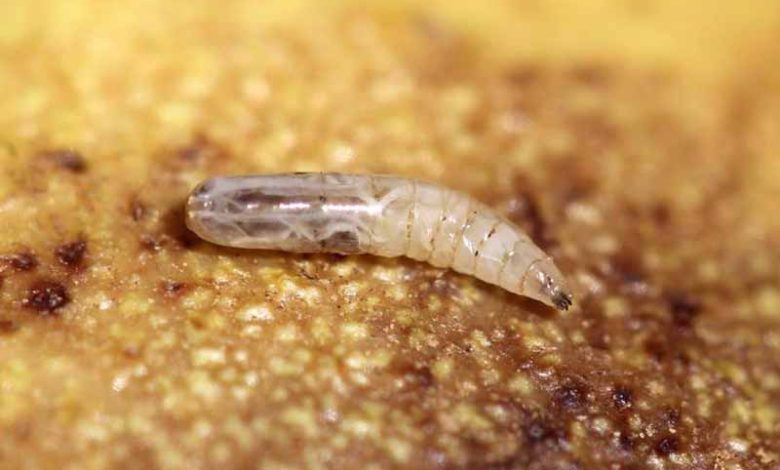
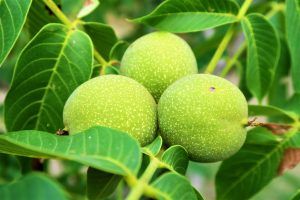 The consumption of nuts in the world is becoming more frequent because they count as one of the most beneficial foods according to their properties.
The consumption of nuts in the world is becoming more frequent because they count as one of the most beneficial foods according to their properties.
The walnut tree is in charge of starting high-quality productions, as long as they are not affected by pests and diseases.
Crops can be more or less affected depending on the geographical area where they are located, since some depend on environmental factors.Therefore, to take the necessary precautions, it is best to be well informed about the whole subject and here we let you know everything.
bacteriosis
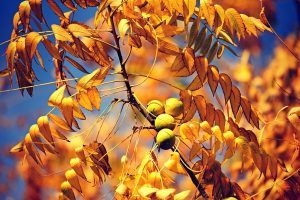 It is one of the most common diseases in walnut trees and its activation is due to the presence of a bacterium.
It is one of the most common diseases in walnut trees and its activation is due to the presence of a bacterium.
The most evident symptoms appear on the leaves in which dark spots with a chlorotic center develop.
These spots tend to have an oily appearance which, in some cases, can also be found on flowers and buds.
The biggest problem is that the spots can penetrate areas of the plant, including the fruit where they reach the seeds.Therefore, the possibility of consuming these is lost because they are damaged and, at the end of the road, they end up falling from the tree.
The causes that promote its appearance are related to frequent rainy days when the plant is in the flowering stage.However, it is necessary that the high humidity condition is maintained for the disease to disturb the healthy development of the seeds.
In this case, the practice of good cultivation strategies will be essential and include keeping the trees ventilated and well lit.If you are in an area where bacteriosis is common in walnut trees, it is best to use copper -based products to wet the leaves.
anthracnose
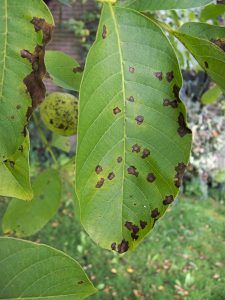 It is a disease that is generated from the action of a fungus and that is common in many types of trees, including the walnut.
It is a disease that is generated from the action of a fungus and that is common in many types of trees, including the walnut.
For the fungus to become active, two specific environmental conditions must come together: high humidity and high temperatures .
Like bacteriosis, it has the property of generating dark-colored spots on the leaves.
However, the anthracnose fungus leaves flashes of whitish material on the surface that corresponds to the mycelium of the fungus.When the leaves are attacked, defoliation occurs a short time later , which affects the healthy development of the fruit and even the seeds.
Copper-based products that work against bacteriosis also have a positive effect in combating anthracnose.However, since in this case the attacker is a fungus, it is necessary to supplement with a fungicide.
If treatment has progressed on an infected tree that was pruned in winter, it is necessary to burn the remains.
carpocapsa
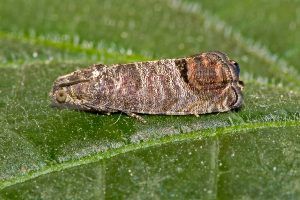 It is one of the pests that has the greatest facility to carry out numerous attacks on walnut trees.
It is one of the pests that has the greatest facility to carry out numerous attacks on walnut trees.
Its primary action is carried out by the larva that enters the fruit by making a hole in the outer layer until it penetrates the interior.
As a consequence, a dark-colored spot is created in the area where the hole advanced.When the larva deposes its droppings, they usually come out through the fruit hole and have a sawdust-like texture.
Early action will help control the adult species that are responsible for filling the fields with eggs.For this, it is best to use ecological insecticides approved for this species.In addition, these must be selected according to the geographical area where the problem is occurring.
CLVR
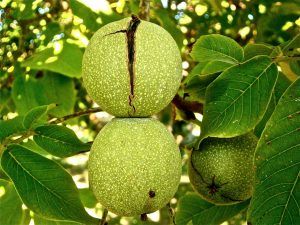 It is a disease caused by a virus and whose acronym stands for Cherry Leaf Roll Virus.
It is a disease caused by a virus and whose acronym stands for Cherry Leaf Roll Virus.
This is one of the diseases most feared by walnut growers because its effects are uncontrollable and lead the tree to inevitable death.
In addition to that, its transmission capacity is incredibly fast, being carried out through the air.This high level of attack produces as a consequence that large amounts of crops are lost if they are not worked on time.
Generally speaking, the only possibility to deal with it is by planting grafted trees .The one used for this case is the Juglans regia, which has been developed with the sole objective of serving as a retaining wall for the virus.
One more piece of information that is important to know is that in Spain the place where the greatest presence of CLRV has been detected is in the Iberian Peninsula.
Grown Gal
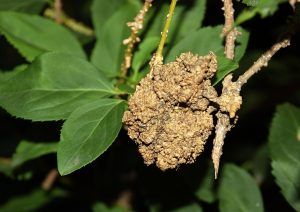 It is a disease that owes its appearance to the action of a bacterium known as Agrobacterium Tumefaciens.
It is a disease that owes its appearance to the action of a bacterium known as Agrobacterium Tumefaciens.
When it directs its attack at a plantation of walnut trees, it begins by damaging the most recently planted trees.
The bacterium is located mainly at the base of the trees, causing a kind of tumor to appear in the root zone.
This condition prevents the exchange of fluids from the base to the top of the tree from occurring as it should, thus preventing optimal development.In fact, when the tumors collapse the internal tissues, the plant becomes unable to receive the nutrients and water that it absorbs from the soil.
This results in a generalized weakening of the tree that, on many occasions, leads to its total loss.And, the loss of the tree does not result in the bacteria dying because it is able to stay alive for a long time in the soil.
For this reason, it is necessary to carry out disinfection of the land when they are to be used for the first time.But if you are going to move forward with plantations on land that has already shown the presence of the bacterium, it must be treated accordingly.
All in all, walnut is a very resistant species that, if well treated, can give us a production of exceptional quality and quantity.
Black line disease Cherry leafroll virus (CLRV-W)
- Symptoms: Gradual reduction in tree vigor; the leaves are yellow and fallen; defoliation occurs prematurely and is followed by the death of terminal shoots; Small holes or cracks may appear at the graft union and the underlying tissue may be discolored.
- Cause: Viruses.
- Comments: The virus can be introduced from infected graft wood or infected pollen.
- How we control it: Introduction of the disease into uninfested areas can be prevented by using virus-free graft and budwood from English walnuts; in zones. where the disease is rare, immediate removal of trees identified as infected can prevent spread.
Armillaria root rot (oak root fungus) Armillaria mellea
- Symptoms: Small, discolored leaves that drop quickly; death of the branches; plant death; clusters of honey-colored fungi may sprout at the base of the plant.
- Cause: Fungus.
- Comments: The fungus survives on dead roots in the soil.
- How to control it: Armillaria root rot cannot be effectively controlled once it has become established in an orchard; diseased or dead plants should be uprooted. be removed; planting of resistant rootstocks is the most effective method to prevent the disease.
Agrobacterium tumefaciens
- Symptoms: Galls of various sizes on roots and root crowns below the soil line; galls may occasionally grow on trunk; galls are initially light-colored bumps that grow and darken; gills can be soft and spongy or hard; if galling is severe and girdling the trunk, young trees are weakened due to constriction of vascular tissue; trees may be stunted and rarely die.
- Cause: Bacteria.
- Comments: The bacterium enters host plants through wounds and causes proliferation of plant cells and undifferentiation of cells, leading to gall formation.
- How we control it: Plant only disease-free nursery plants; plant the trees in well-drained soils; avoid injuring the plants as much as possible; fresh wounds can be treated with a biocontrol agent (Agrobacterium tumefaciens K84), if available, to prevent bacteria from colonizing.
Walnut blight (Xanthomonas campestris)
- Symptoms: Small water-soaked spots on immature fruit, rapidly darkening and enlarging; may have bacterial ooze during wet weather; if the infection occurs before the shell hardens, the grains shrivel; later infections can cause grain discoloration, but the fungus does not usually invade; Infected catkins are dark and wrinkled; new shoots can also be attacked and lesions can gird the stem, killing the shoot above; lesions can form on the bark of the tree and can also extend to the pith causing cankers to form; leaf lesions are brown with a green-yellow perimeter; leaf lesions may coalesce to form large necrotic areas.
- Cause: Bacteria.
- Comments: Bacteria overwinter in dormant buds; after sprouting the following year, the bacteria infect surrounding leaves and young fruit; The appearance of walnut blight is favored by periods of humid weather.
- How we control it: The main method of control of walnut blight is the application of bactericides that contain copper, such as Bordeaux mixture; Bactericides should be applied weekly to protect new growth during periods of wet weather.
Root and crown rot (Phytophthora Phytophthora spp.)
- Symptoms: Slow growing trees with reduced vigor; the leaves of the tree turn yellow and wither; buds and branches die; if the tree is girdled at the trunk or root crown, death occurs, usually within one growing season; the roots of the infected tree are necrotic and discolored black or brown; most of the roots end up dying; trees with crown root rot may have cankers that extend above the soil line; cankers are visible as discolored bark and have a zoned appearance when the bark is removed.
- Cause: Oomycete.
- Comments: The appearance of the disease is favored by soils saturated with water; the disease is often introduced into orchards through contaminated soil, water, and plants.
- How we control it: Control should focus on minimizing soil moisture and saturation by planting trees in well-drained soils; drainage can be improved by leveling the ground or installing drainage systems; avoid wetting tree trunks when watering them; make sure the graft union is several inches above the soil line when planting the trees.
hickory problems
Walnut trees are largely free of pests and diseases, but they can suffer from the following:
- Gray squirrels can devastate the entire crop. Wrapping the trunk with a plastic protector that squirrels cannot grab and raising lower branches 1.8-2.5m can deter attack.
- Walnut leaf gall causes pocket galls on the leaves, but they are insignificant.
- The cod moth can damage the nuts.

![Photo of Gardening Care: [Recommendations and Tricks]](https://www.complete-gardening.com/wp-content/uploads/2022/08/gardening-care-recommendations-and-tricks-390x220.jpg)
![Photo of Temperate Climate: [Characteristics, Flora, Fauna and Adaptability]](https://www.complete-gardening.com/wp-content/uploads/2022/08/temperate-climate-characteristics-flora-fauna-and-adaptability-390x220.jpg)
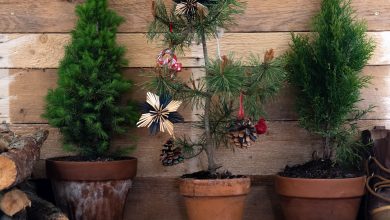
![Photo of Loquat: [Cultivation, Irrigation, Care, Pests and Diseases]](https://www.complete-gardening.com/wp-content/uploads/2022/08/loquat-cultivation-irrigation-care-pests-and-diseases-390x220.jpg)